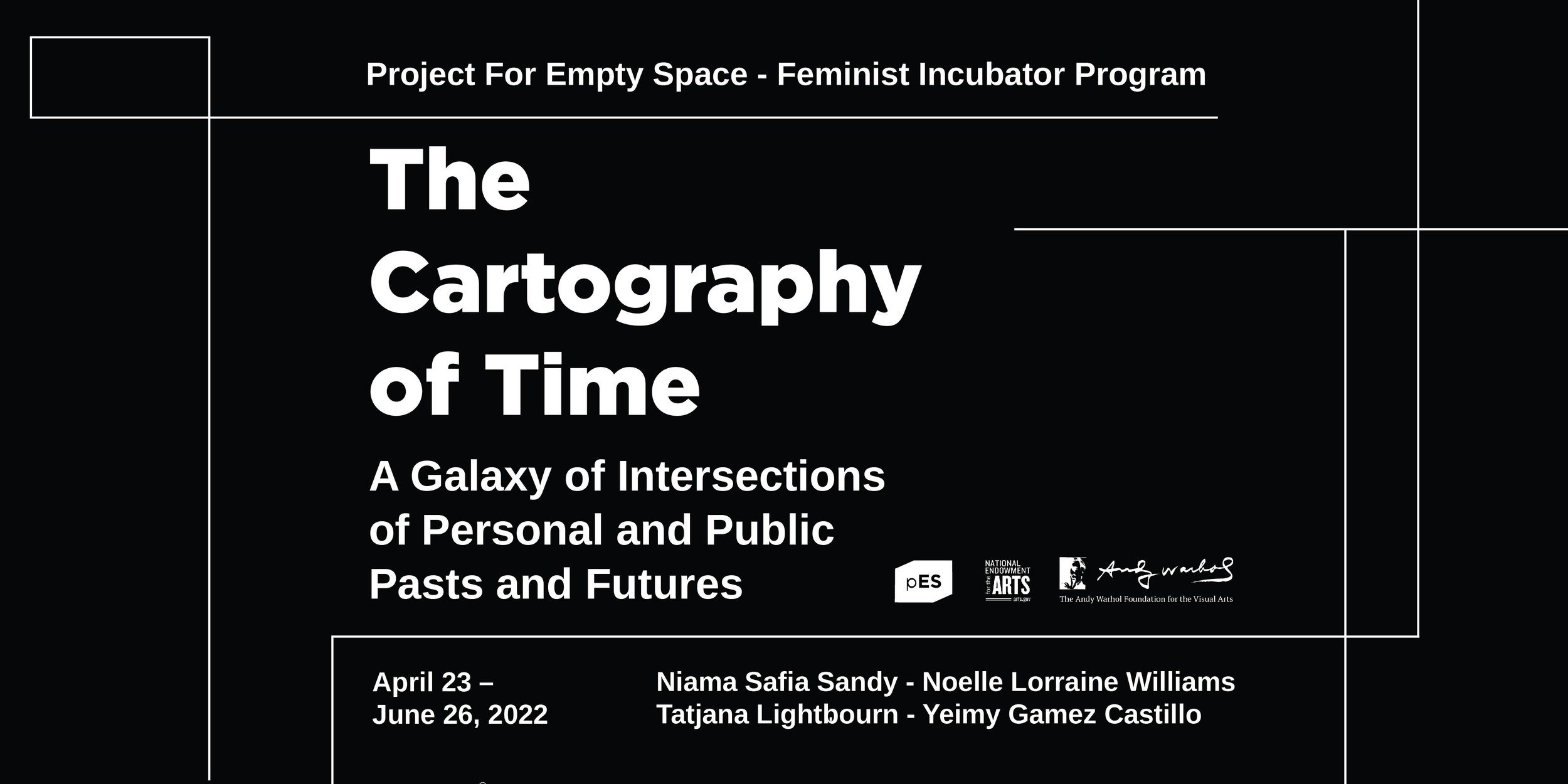




The Cartography of Time: A Galaxy of Intersections of Personal and Public Pasts and Futures is a group exhibition is comprised of works by artists from the 2021 Feminist Incubator cohort: Niama Safia Sandy, Noelle Lorraine Williams, Tatjana Lightbourn, and Yeimy Gamez Castillo. The exhibition is on view to the public from April 23, 2022 through June 26, 2022. Due to ongoing COVID-19 considerations, the exhibition is on view by registered time slots. Proof of Vaccination is required to visit Project for Empty Space.
The work in this year’s cohort broadly coalesces ideas of time-bracketed existences. The Cartography of Time is a systematized presentation of these ideas. Within the PES gallery, Sandy, Williams, Lightbourn, and Castillo have each constructed multi-faceted works that function as worlds within a larger galaxy. These pieces are intended to envelop viewers in the artist's vision while simultaneously working together to present possibilities of selfhood- both individual selfhood and collectivized identities. Embedded within the strata of artworks are multi-entendre ideas of transformation (self and/or group: physical and/or mental: earthly and/or ephemeral), movement (verb and/or noun: social and/or individual), mapping (colonial and/or de-colonial), mythology, erasure (intentional and/or harmful), visibility, and identity.
Upon entering the PES Galaxy, the audience encounters The History of Newark’s Black Women Slaves (2022), A multi-part, multimedia installation by Newark-based historian-artist Noelle Lorraine Williams. Williams’ work is an evolution in her ongoing work mapping the Black Power Movements starting in the 19th century to the present day. The History of Newark’s Black Women Slaves (2022) pulls elements from years of archival research and storytelling. It is an homage to a rich and expansive conversation around history, Black women, and radical histories written by enslaved people in the 1800s.
Williams describes The History of Newark’s Black Women Slaves (2022) as a fabric historical narrative using the language of craft and prioritizing the stories and words of women. The piece is an interactive work: it is a small house-tent-building that audiences can enter to be surrounded by and move through to read multiple simultaneous histories. The walls of the tent are comprised of sewn-together stories of archival materials that prompt a critical discourse and heterogenization of historical narratives. Runaway slave notices, beaded tapestries, printed textiles, and other cartographic documents languidly drape over the skeletal frame structure. A LED light depicting a Black woman preventing a man from using a whip on an unknown person hangs on the wall at the end of the path suggesting the placement of the crucifixion of Christ. Williams creates a space of comfort and safety for critical contemplation.
Not only is The History of Newark’s Black Women Slaves a vessel of complex histories, but it is also an altar to the love of historical artifacts. particularly the hidden stories of Black women.









As one propels through the PES Galaxy, they next encounter Grasping For Air (2022) by New York-based artist Tatjana Lightbourn. Through an autobiographical lens, her large-scale, site-specific, piece is an immersive and introspective map, generously presented to the public. Like William’s work, Lightbourn’s cartographic wall mural is based on archival documents including photographs, maps, and floorplans.
The conceptual root or prompt for Grasping For Air (2022) is born from the artist's relationship with her Grandmother (Emeline). Reminiscent of a hybrid family tree and line map, this piece traces the spaces that the artist and her grandmother shared. It is a contrived chart: a map of a space that is not trackable because it does not exist as a physical or geographical locale. It is instead an imaginary place composed of layers of experiences and familial bonds that create the expandable bounds of memory and love.
Within the stiff and straight black lines of this plot are an interspersing of the paintings, drawings, and photographic material from the artist's life. Small black and white or muted colored snaps sprinkle across the spread like stars dotting an infinite sky. Silhouettes and figurative outlines are planted throughout. The expanse is both vast and intimate. It feels bracketed by memory, but unendingly expansive. Some of the Mondrian-esque lines do not end definitively but phase out with frayed ends creating the possibility of continuing outwards.
In creating this work, Lightbourn asks not only herself, but the audience to contend with the idea of constructing personal history from memory. She urges the viewer to contemplate a state of comfort that is both contained yet as open-ended as her installation and the future.
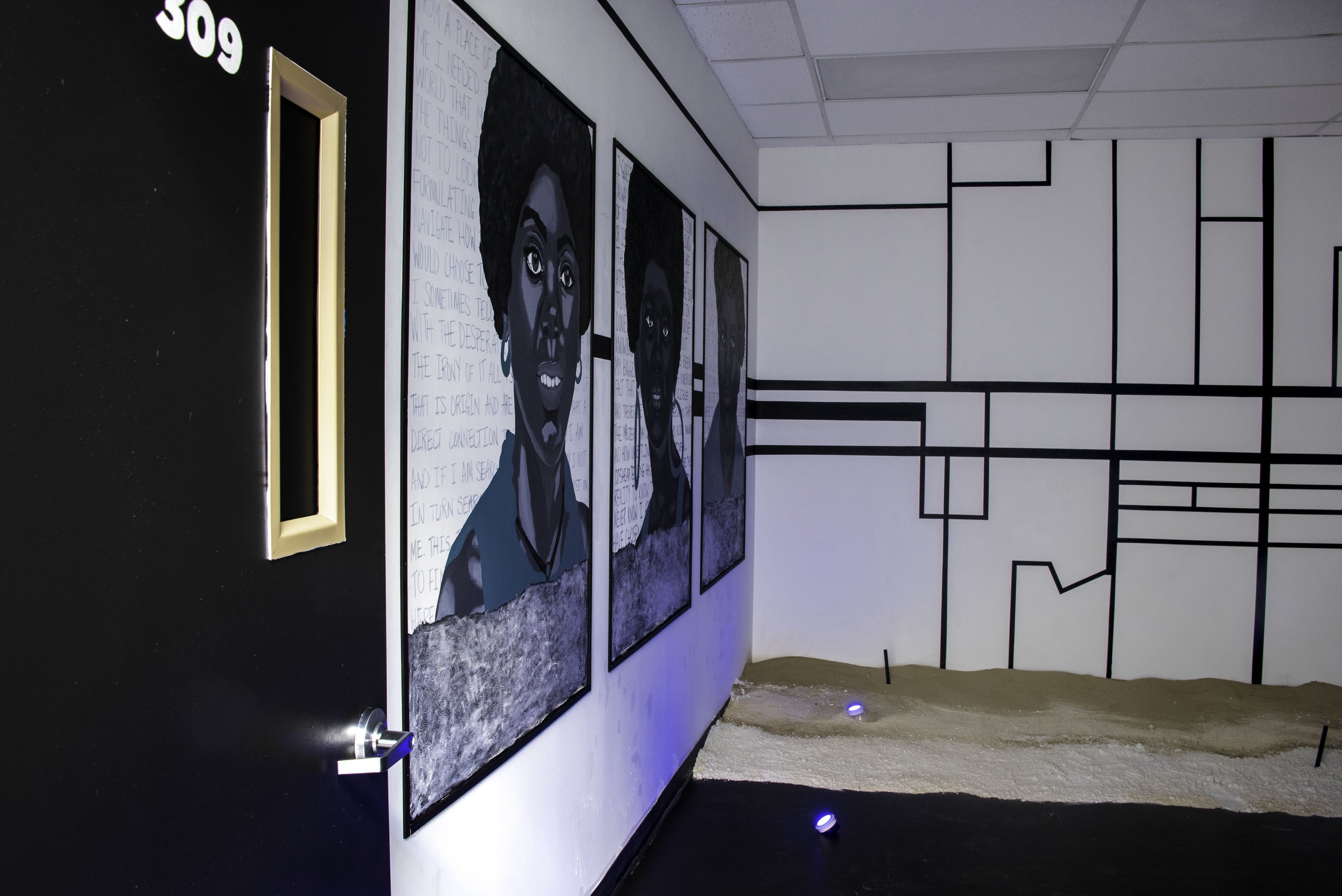







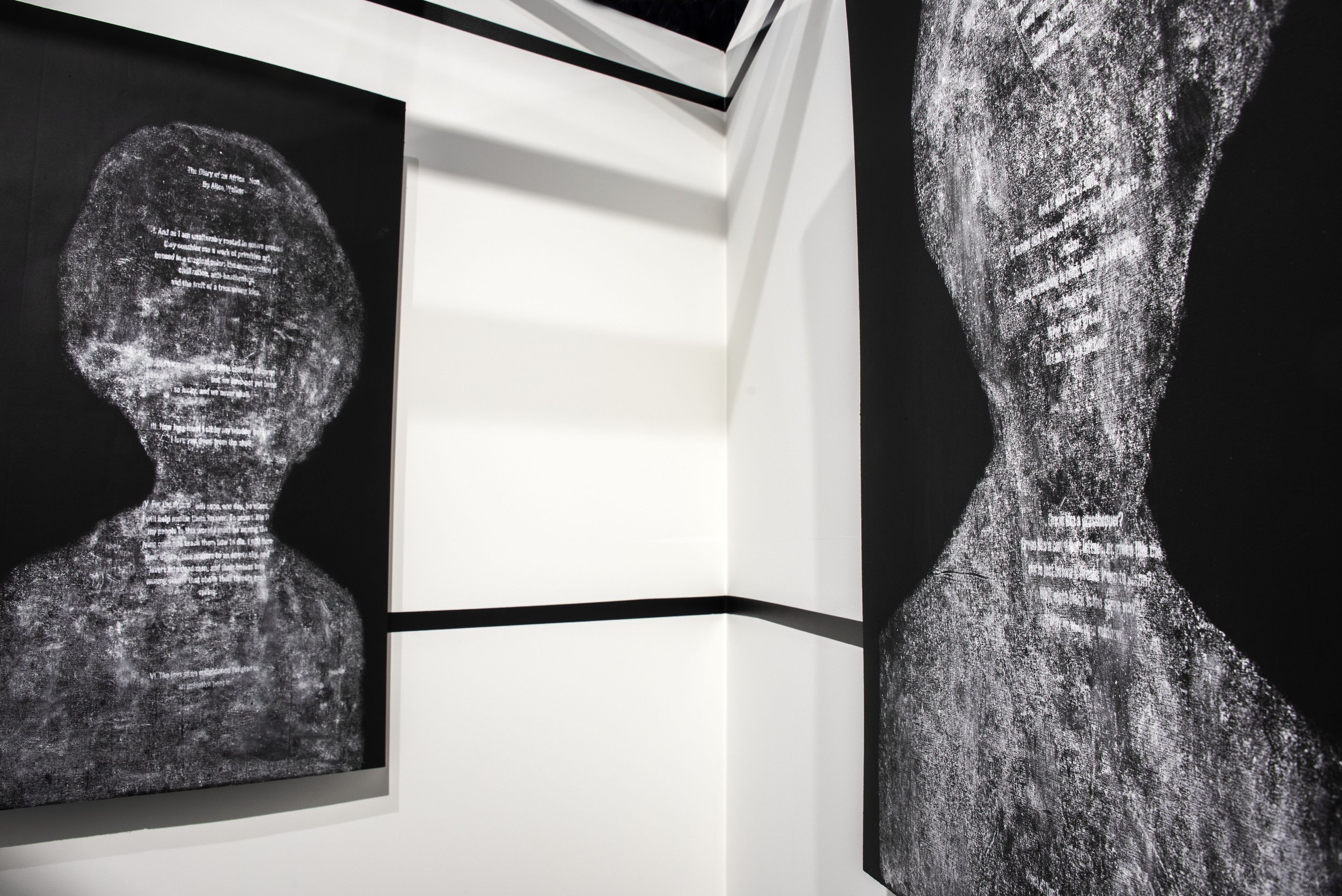



Next on the journey through the PES Galaxy is another work that can be interpreted as both contained yet infinitely expanding. Niama Safia Sandy’s massive paintings are multifaceted in their black depths. In this series, which is part of a more recent investigation by the Art Historian-Artist-Writer, Sandy’s paintings assert Blackness as a cultural position, a metaphysical primordial source of infinite possibility and protection.
The central focal point of these paintings is a gestural form known as ‘The Groove,’ which the artist refers to as a gesture towards freedom, and refusal.
The Groove exists in a point of tension between multiple ideas. While appearing to be one-dimensional flat at first glance, it is a disregard for the monolith- of flatness. It is multidimensional on many fronts: from the variegating tones and shades of black to the layers upon layers of oil stick, paint, and acrylic. The movement is alive with the artist's frenetic energy that morphs in and out of concentricity and tangentiality- the southernmost portion disappearing into an unseen abyss. These articulations of full-body engagement on the canvas are absorbing. They both pull in and push out, creating a sense of unavoidable transgression in many directions. Each work is a womb-like portal full of the possibilities of liberation from oppressive Whiteness and toxic Capitalism.









The final stop on the journey through artists’ visions is Yeimy Gamez Castiillo’s installation Unravel (2022). This piece is an amalgamation of multidisciplinary experiences, including written poetry, experimental sound and spoken word, photography, and sculptural intervention. These elements all coalesce together as a fully immersive experience. Unravel (2022) encompasses many aspects that the other works in the show share: it pulls from the artists' personal Lenca-Pipil ancestry; an amalgamation of different femme-centric mythologies; and a call for collective movement towards liberation, power, and resilience for femmes.
The literary and sonic aspects of this cocoon space in the PES Galaxy are multilingual. Poems are written and voiced in Nawat, English, and Spanish. They touch on a variety of intersecting and layered topics such as sexual identity, autonomy, displacement, survival, violence, and love.
Like the other planets in the exhibition, Castillo’s Unravel (2022) reveals something that is often intentionally invisibilized. It not only sweeps back the curtain but also presents possibilities for healing and growth within new critical thinking and emotional vulnerability. It is the crescendo of pasts, presents, and futures in one physically small ecosystem.
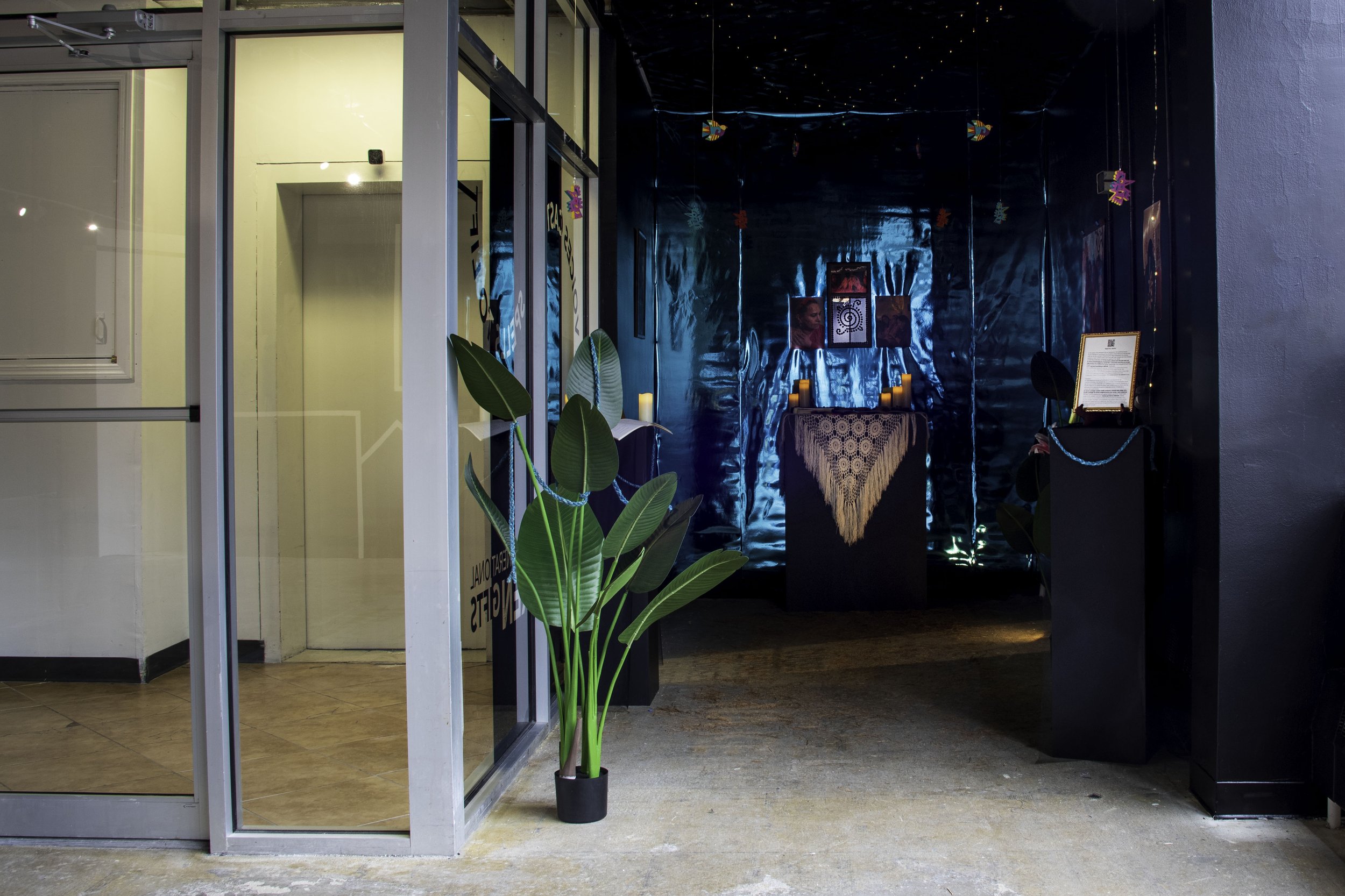



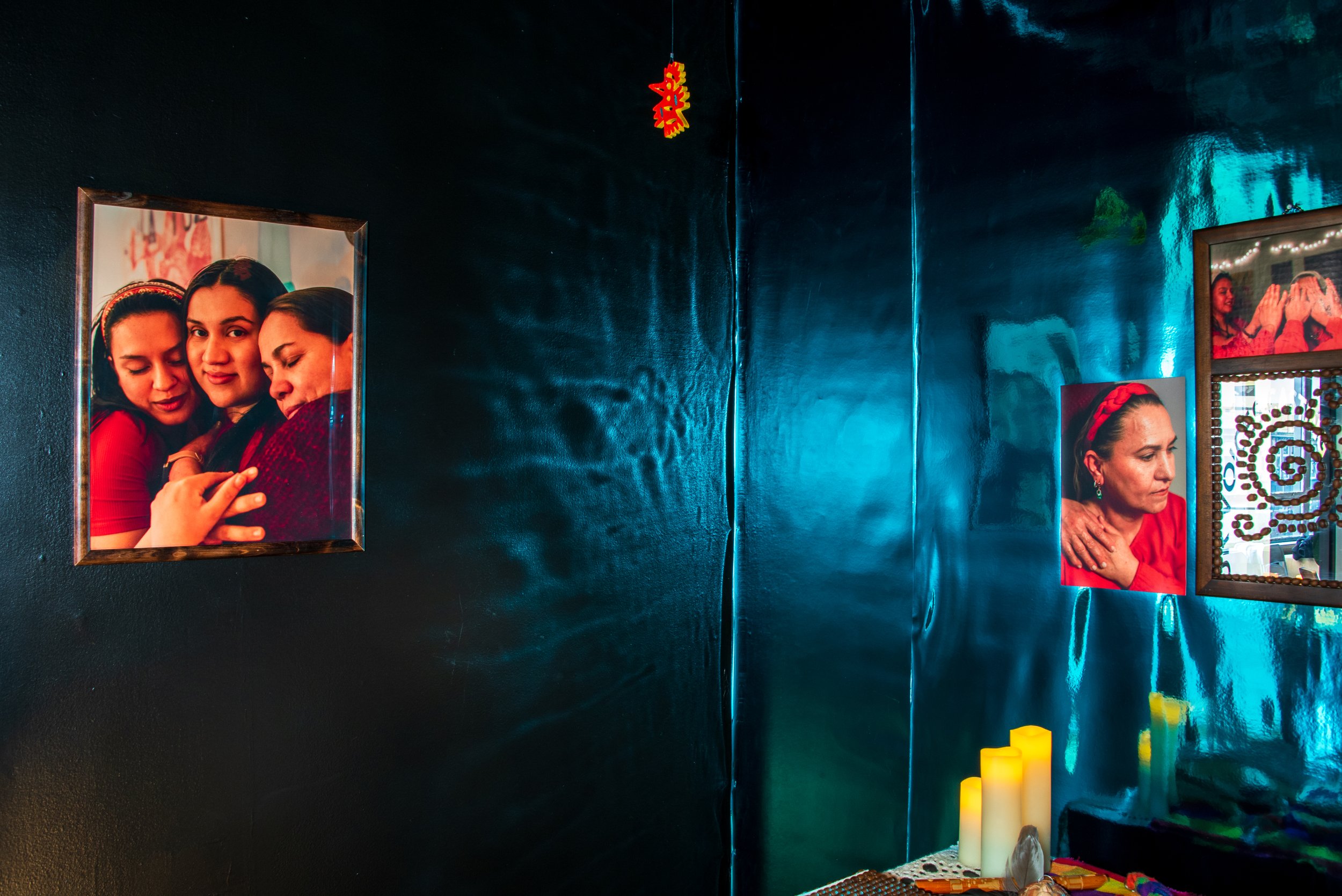


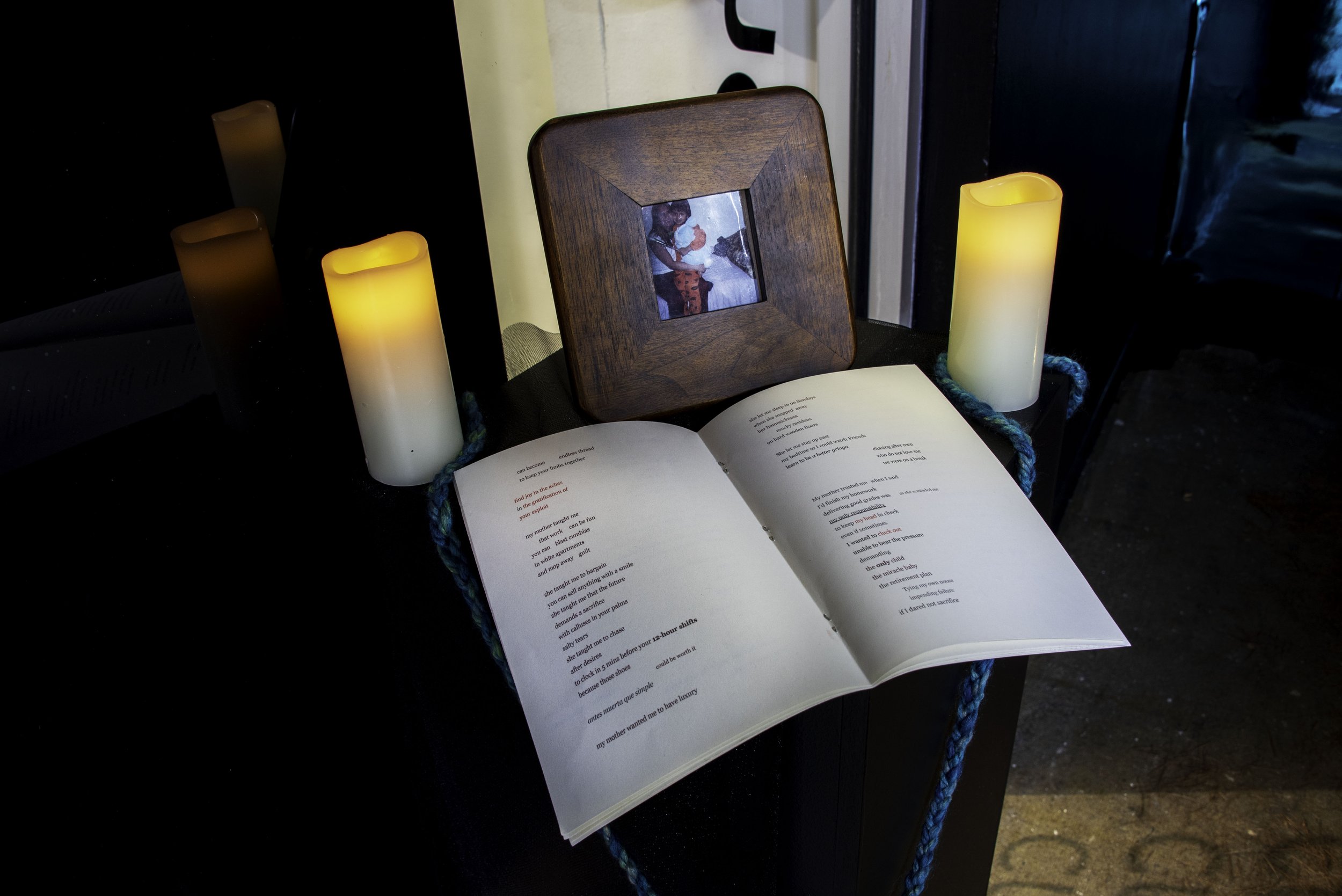
The Cartography of Time: A Galaxy of Intersections of Personal and Public Pasts and Futures presents us with gifts from four visionaries. Embracing aspects of intersectional feminist theories, each artist pulls together multifaceted and complex ways of seeing that can expand our thinking in universal and expansive new ways.
The Cartography of Time: A Galaxy of Intersections of Personal and Public Pasts and Futures will be on view at Project for Empty Space through June 26, 2022, at 800 Broad St. in Newark, New Jersey.
Learn more about the artists here.
About The Feminist Incubator
The PES Feminist Incubator is an annual residency for femme-identified and non-binary artists who are interested in intersectionality and contemporary feminist discourse. The program invites artists working in and across multiple creative disciplines (literature, dance, performance, visual arts, theater, etc.) to join in a group residency for six months, during which time the cohort will have an exhibition of work created during the residency. Incubator members will work in a shared studio with access to resources such as a feminist library & lounge, writing, print and publishing workshops, studio visits, and more. This residency not only provides much needed safe space for femme-identified creative practitioners, but also is a space for productive and critical intersectional dialogue as a means of catharsis, camaraderie, and education.
About Project for Empty Space
Project for Empty Space is a nonprofit arts organization dedicated to creating safe and equitable spaces for social discourse. PES is committed to cultivating conversations around important social issues through the lens of contemporary art and intersectional frameworks. Its mission is to support artists whose work is oriented around social impact and activism; and to initiate conversations that engage issues of marginality, intersectionality, and paradigmatic cultural shifts.
